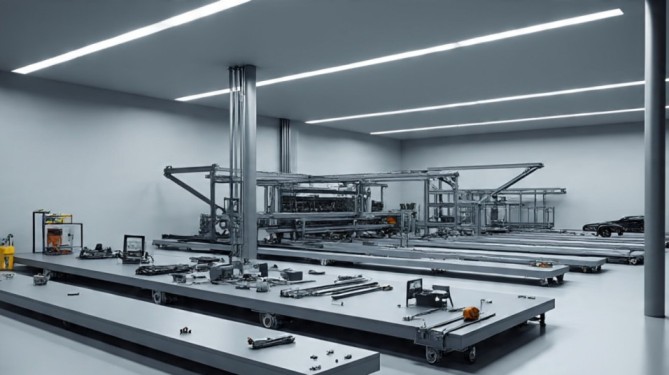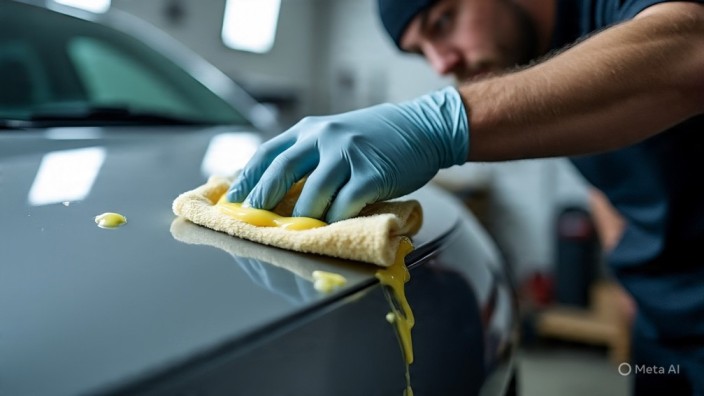The automotive sector is changing fast, with new technologies reshaping the design, assembly, and testing of vehicles. From electric drivetrain technology to sophisticated automation, producers are adapting to stay competitive in a market characterized by intense competition. The technologies not only enhance efficiency but also minimize environmental footprints and improve driving experience.
Adoption of Electric Vehicle Platforms
One of the biggest changes in motor manufacturing is the development of electric vehicle (EV) platforms. Conventional internal combustion engine (ICE) vehicles are being phased out by electric vehicles, which have completely different manufacturing processes involved. EV platforms are engineered with fewer components that move, creating less manufacturing complexity and simpler maintenance.
Producers are investing in dedicated EV assembly lines with specialized equipment and tools. The platforms are modular, enabling automakers to assemble multiple models on a single chassis, reducing time and expense.
Integration of Artificial Intelligence and Robotics
Artificial intelligence (AI) and robotics are revolutionizing car assembly lines. AI software is able to process data from sensors in real-time to enhance quality control, spot defects, and forecast maintenance requirements for equipment. Industrial robots, on the other hand, perform functions such as welding, painting, and fitting parts with precision and speed.
The marriage of AI and automation eliminates human mistakes and increases the output of production while ensuring uniform build quality in every unit.
Use of Lightweight and Environmentally Friendly Materials
Car manufacturers are increasingly using lightweight materials like aluminum, carbon fiber, and high-strength steel. They minimize vehicle weight, which improves fuel efficiency and reduces emissions. While they achieve this, they keep durability and safety intact.
Recycling and the use of environmental-friendly materials for both body panels and interiors is also increasingly becoming a focus point. Being sustainable is now a part of the car-making process that cannot be compromised.
Advanced 3D Printing Applications
It is no longer about prototyping with 3D printing. Today, it is employed to create custom tools and fixtures and even car parts. The technology provides more design freedom, fast iteration, and affordable production of low-volume parts.
With additive manufacturing, complex shapes that were previously difficult or expensive to make using traditional methods can now be created with ease and precision.
Connected and Smart Manufacturing Facilities
Today’s car factories are getting smarter and more integrated. Industry 4.0 is the term for this strategy, which pairs cloud computing, Internet of Things (IoT), and analytics to make operations more efficient. Sensors monitor everything from machine condition to material movement, making predictive maintenance possible and reducing downtime.
Digital twins—virtual copies of physical assets—enable manufacturers to test production scenarios and improve performance without affecting actual-world operations.
With the middle of adopting these new vehicle manufacturing technology trends, businesses are looking towards industry platforms such as Linkhouse to discover trustworthy resources, gain access to technical knowledge, and remain informed about the current innovations defining the future of mobility.
Accent on Self-Driving Car Production
The trend towards autonomous driving is changing the way cars are manufactured. Producers are adding sensors, cameras, and sophisticated control units to cars at great expense to enable lane-keeping, adaptive cruise control, and autonomous driving.
The trend necessitates new assembly methods, new test procedures, and specialized parts, all of which are fueling innovation in manufacturing.
Digitalization and Augmented Reality in Design
Augmented reality (AR) and virtual reality (VR) are becoming essential tools for automotive design and training. Engineers can now visualize vehicle models in 3D, test different configurations, and identify issues before production begins. This reduces development time and cost while improving product accuracy.
AR is also used on the factory floor to guide workers during assembly, reducing errors and improving productivity.
Final Thoughts
To remain competitive in the current automotive market is to be embracing the new trends in automotive manufacturing technology. Whether electrification and automation, sustainable materials, or smart factories, these advances are transforming all aspects of how a vehicle is manufactured. Those manufacturers who embrace these advancements are not only becoming more efficient but also gearing themselves up for a future characterized by smarter, cleaner, and safer mobility.
Also Read: Mastering Surface Protection: How and When to Apply Waxillgro279



